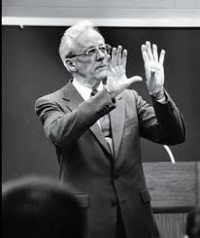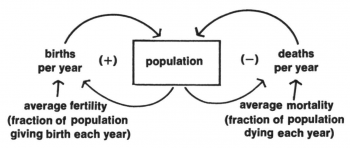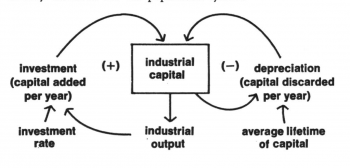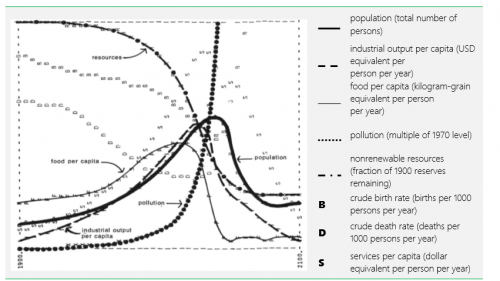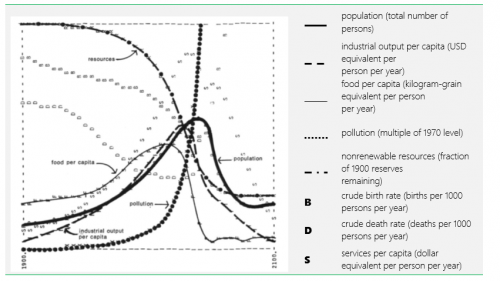Limits to Growth
Contents
Historical Background
In April 1968, scientists, economists, educators and other individual professionals discussed “the present and future predicament of man” in the meeting organized by the Giovanni Agnelli Foundation and the National Academy of Lincei. As an outcome of the meeting an international organization named “The Club of Rome” was established.
The Club of Rome was incorporated on March 1970 in Geneva as a non-profit private association under the Swiss Civil Code [4]. The Club of Rome is an informal organization aimed to stimulate understanding and share knowledge on economic, politic, natural and social components of the real live, as well as, attract attention of policy makers and public globally [3].
A series of early meetings of The Club of Rome culminated in the decision to initiate a remarkably ambitious undertaking -the Project on the Predicament of Mankind. The intent of the project is to examine the complex of problems troubling men of all nations: poverty in the midst of plenty; degradation of the environment; loss of faith in institutions; uncontrolled urban spread; insecurity of employment; alienation of youth; rejection of traditional values; and inflation and other monetary and economic disruptions [1, p.12].
The Limits to Growth, which concludes the main features and findings of the project, was published by Potomac Associates, The Club of Rome and MIT research team. Group of professionals from several countries participated in the research work. Different possible scenarios showing different outcomes of future development (from 1900 to 2100) of world was researched and introduced in the book. System dynamics theory and WORLD 3 computer model was used in the research project.
In 1992, on the 20th anniversary of the publication of Limits to Growth, the team updated Limits in a book called Beyond the Limits. Ten years later in a new study, Limits to Growth: The 30-Year Update, the authors have produced a comprehensive update to the original Limits, in which they came to conclusion that mankind is dangerously in a state of overshoot [2, p.4].
Problems & Models
The prototype model on which research is based was designed by Professor Jay W. Forrester from the Massachusetts Institute of Technology [1, p.21]. This written model of the world was established and used to understand global problems and reasons behind. Five significant interconnected global issues was selected: 1) accelerating industrialization, 2) rapid population growth, 3) widespread malnutrition, 4) depletion of nonrenewable resources, 5) a deteriorating environment.
On the other hand, time horizon of the model is longer than 30 years, and that includes important variables such as population, food production, and pollution, not as independent entities, but as dynamically interacting elements, as they are in the real world.
For constructing model following steps were implemented by authors:
- Important relationships among five main levels (associated with the 5 significant problems) and the feedback loop structure was listed
- Each relationship was quantified as precise as possible using available global data
- In order to find most critical factors impact of numerical changes in the assumptions were tested and relationship changes over time was analyzed
- The effect on the existing global system of the various policies was tested
Exponential Growth
The problems described in the previous section, establish five main elements of the study, which are population, food production, industrialization, pollution and consumption of nonrenewable natural resources.The amount of their annual increase follows a trend that called exponential growth. A quantity exhibits exponential growth when it increases by a constant percentage of the whole in a constant time period.
Exponential growth involves elements that change over time. On the other hand, if elements are interrelated with each other, it becomes very difficult to analyze. Because of the dynamic nature of exponential growth, it is somehow involved with a positive feedback loop in dynamic modelling theory. Simultaneously, while positive feedback loops generate growth, negative feedback loops regulate growth and stabilize the system. For instance, negative feedback loop controlling population is described as average mortality. Another example is stands for economic growth or industrial output.
However, we should also consider many other factors in the world that interacts with population-capital system. The first of them is indeed, physical necessities that support industrial activities – raw materials, fossil, food etc. Secondly, it is about social requirements, like peace, stability, education and etc. This second category of factors are more difficult to analyze.
Significant resources for the industrial processes was analyzed during research project. Availability and reserves of each resource with the current rate of usage was described in the “The Limits to Growth” book.
From a dynamic and global perspective, it is very difficult to understand and control the future state of our ecological systems. Unfortunately, because of unavailability of information on some types of pollution, on their global distribution and limits. Some pollutants are obviously directly related to population growth. Others are more closely related to the growth of industry and advances in technology. We can describe pollutants, like carbon dioxide, nuclear or radioactive wastes and etc., using time and exponential growth consideration. However, ability of earth to recover, natural delays in the ecological processes and upper limits of pollution should be considered as well. (For additional details please check “Chapter 2. The Limits to Exponential Growth”)
World Behaviour
Behavior of the World Model, firstly was analyzed assuming there will be no major change in the human values, functioning system of the global population, as well as capital systems. In other words, world will be assuming to function as previously over last 100 years. Authors called this behavior as “standard run” and used for the comparison with other models. Authors described the behavior of world under standard conditions as follows:
Data from 1900 to 1970 was plotted based on the historical data, after that period the projection till 2100 was done. Authors described standard behavior of the World model as overshoot and collapse. The reason for collapse is devastation of resources. The industrialization reaches to a level that demands a huge amount of resources. Scarcity of resources result in price increase, which decrease investments for future growth and consequently collapsing. With decreasing trend of industrialization, food output declines as well. This result in high death rates and population decrease.
Authors also described projection of world behavior of model with an increase (double) in the amount of available resources. In this run industrialization can reach a higher level, because of doubled resources. Therefore, pollution rises very rapidly, resulting in the high death rate and a decline in food production.
However, standard run indicates no major change in the conditions of the world. From this perspective, technological changes impact population-capital systems. Energy and resource related technologies, pollution control, agricultural productivity technologies are example of these advances. Many different models were represented in the book, however authors come to conclusion that the basic behavior of the world system is exponential growth of the population and capital, followed by collapse.
References
- Meadows, D.H., Meadows, D.L., Randers, J. & Behrens, W.W. (1972). The Limits to Growth: A report for the Club of Rome's project on the predicament of mankind, New York: Universe Books.
- Meadows, D., Randers, J. & Meadows, D.L. (2004). A Synopsis Limits to Growth: The 30-year Update, White River Junction: Chelsea Green Publishing Company.
- The Club of Rome, https://www.clubofrome.org/
- The Club of Rome. (1970). The Predicament of Mankind: Quest for Structured Responses to Growing World-wide Complexities and Uncertainties. Proposal.



